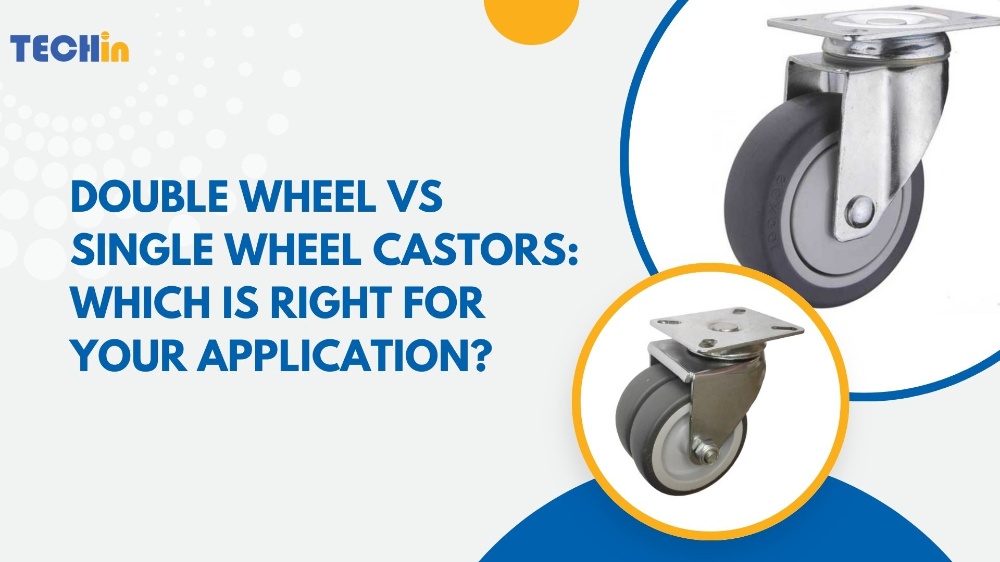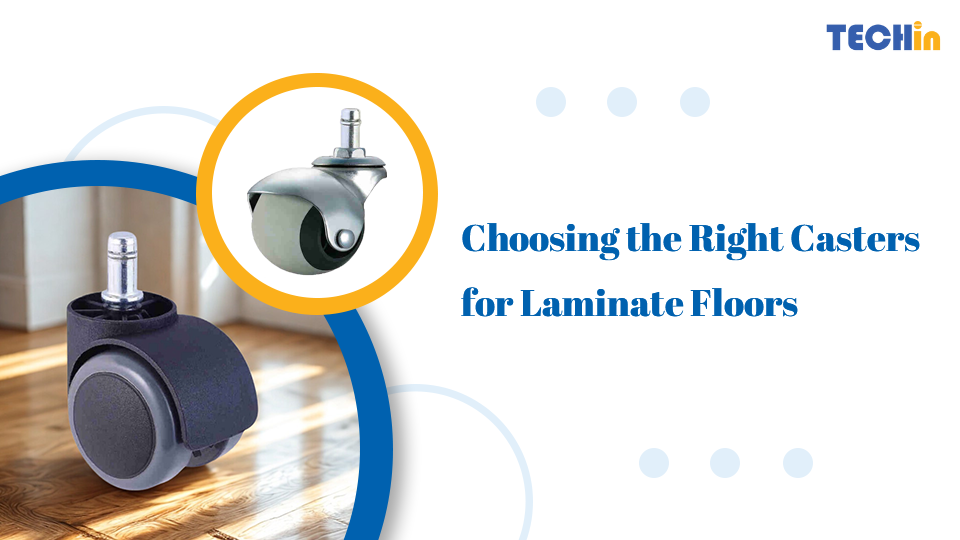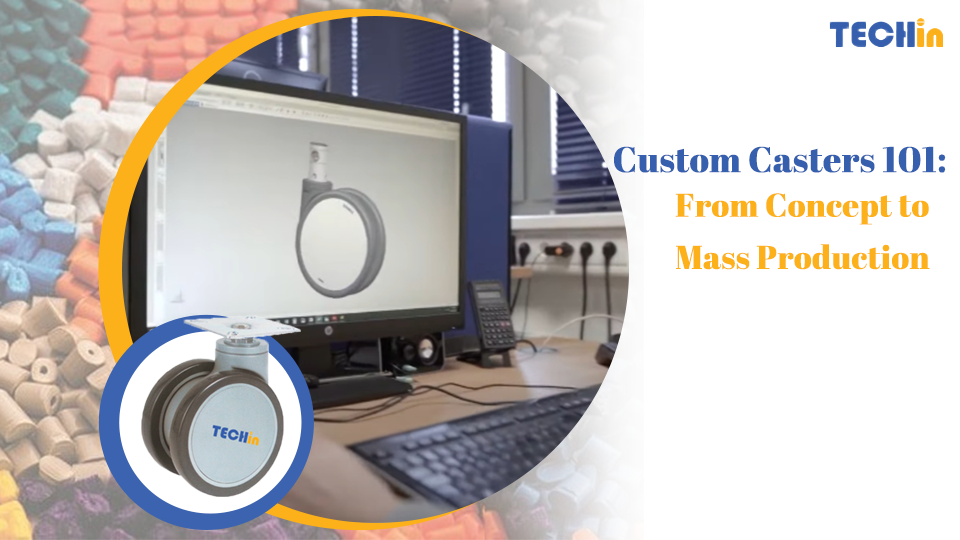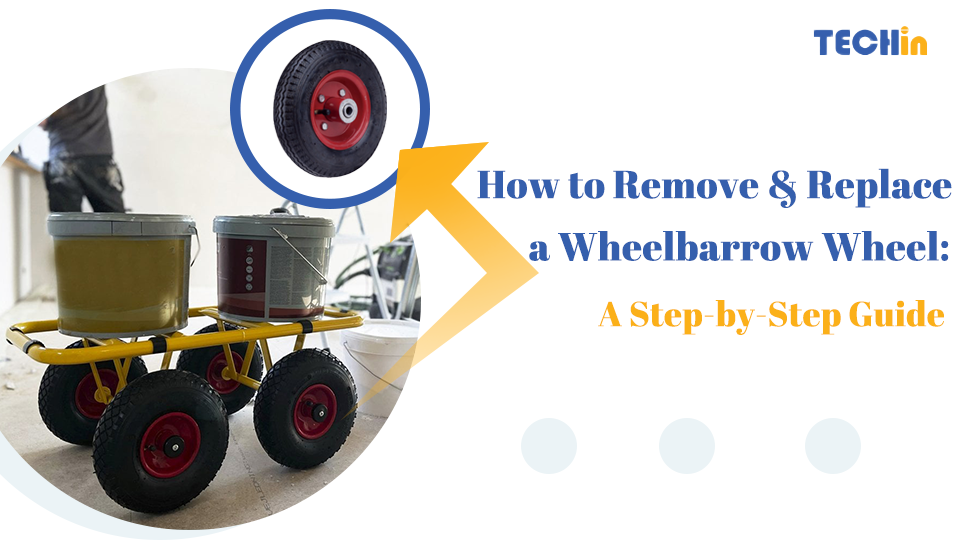If you work in the hardware or machinery industry, you know it is not easy to choose the right castor. Whether you’re moving heavy machinery or lighter furniture, choosing between double and single wheel castors can make a big difference in your efficiency and safety. In this article, we’ll look at the key differences and help you make the best choice for your needs.
When it comes to load bearing capacity, double wheel castors are superior. With two wheels, the weight is evenly distributed, making it easier to move, more stable, and able to handle more weight. On the other hand, single wheel castors are generally better for lighter, more compact applications. They look sleek and are easier to maneuver in tight spaces.
Now that we’ve covered the basics, let’s dive deeper into the key features and differences between double and single wheel castors.
What Are Double Wheel Castors?
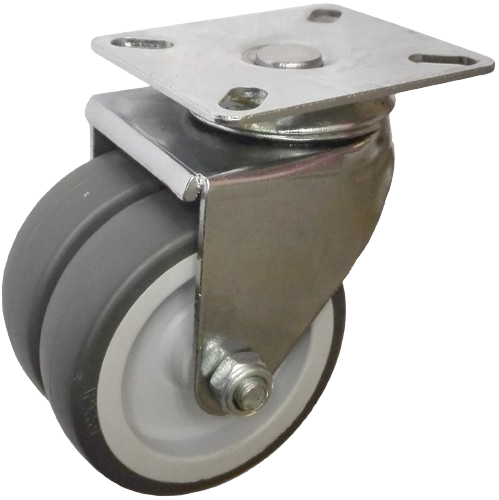
Double wheel( also called dual wheel and twin wheel) castors consist of two wheels mounted side by side on a single bracket, designed to share the load and provide enhanced stability. These castors are particularly beneficial in environments where load bearing capacity and stability are the primary concerns. Their design allows for smoother movement over rough surfaces, making them ideal for industrial and commercial applications.
Key Features:
- Enhanced Load Capacity: Double wheel castors can carry more weight than their single-wheel counterparts, making them suitable for applications where high load-bearing is essential. The combined strength of two wheels helps distribute weight more evenly.
- Increased Stability: The two wheels offer greater surface contact, which results in a more stable platform, especially when transporting heavy loads across uneven surfaces or flooring.
- Smooth and Controlled Movement: The design of double wheel castors makes it easier to roll heavy loads, even over rough or carpeted floors. The additional wheel reduces the pressure on each individual wheel, decreasing the chances of wear and tear.
- Noise Reduction: Double wheel castors, particularly those made from soft materials like polyurethane (PU), offer quieter operation compared to single wheel castors, making them ideal for environments requiring minimal noise.
Applications:
- Industrial Equipment: Double wheel castors are perfect for machinery and industrial carts that are frequently moved in warehouses, factories, and manufacturing plants. These castors can handle the heavy loads typically encountered in these settings.
- Warehouse Carts & Trolleys: These are commonly used for transporting heavy inventory, tools, or materials across large spaces, ensuring smooth and easy movement even under load.
- Medical Equipment: Hospital beds, wheelchairs, and other medical carts often use double wheel castors because of the added stability and ability to support more weight.
What Are Single Wheel Castors?
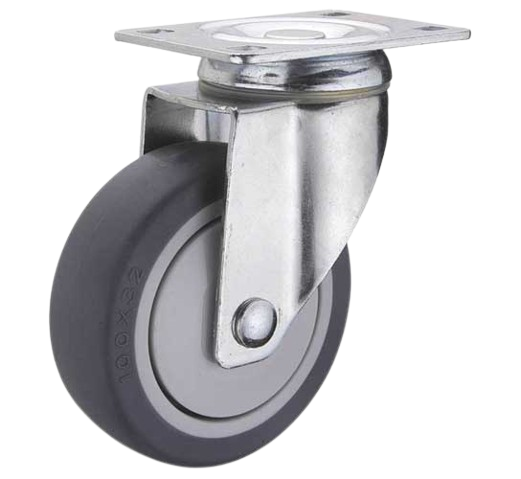
Single wheel castors, as the name suggests, use just one wheel per castor. They are typically smaller, more compact, and ideal for light duty applications where maneuverability is the key focus. These castors are well-suited for environments where space is limited and where the load doesn’t exceed a certain weight threshold.
Key Features:
- Compact Design: Single wheel castors are designed to be space-efficient. Their smaller size allows for installation in tight spaces or areas with limited clearance.
- Greater Agility: These castors excel in environments where sharp turns or quick movements are necessary. They are more agile and easier to pivot, making them ideal for furniture and light carts.
- Cost-Effective: Single wheel castors tend to be more affordable, both in terms of manufacturing and maintenance, making them a popular choice for lighter, less demanding applications.
- Ease of Installation: Due to their simple design, single wheel castors are easier to install on smaller furniture pieces and office equipment.
Applications:
- Office Furniture: Single wheel castors are ideal for office chairs, desks, and tables, providing ease of movement on smooth floors.
- Light Equipment Carts: These castors are commonly used for light-duty carts in retail settings, exhibition setups, or for display units.
- Home Furniture: Single wheel castors are often found on home furniture, such as mobile cabinets, rolling bookcases, or even coffee tables, providing mobility without compromising on design aesthetics.
What’s the Difference Between Single Wheel and Double Wheel Castors?
To better understand which castor type is right for your needs, it’s important to compare them across three key performance areas: maneuverability, stability, and load bearing capacity.
Maneuverability:
- Single Wheel: Single wheel castors are generally more maneuverable and provide greater agility. They can pivot 360 degrees, making them ideal for quick, sharp turns in confined spaces. This makes them perfect for use in smaller, more dynamic environments like offices or home furniture.
- Double Wheel: While slightly less agile in tight spaces, double wheel castors offer smoother rolling over large surfaces. They provide more control when pushing or pulling heavy loads, but they may not handle tight turns as efficiently.
Stability:
- Single Wheel: Single wheel castors tend to be less stable, especially when supporting heavier loads. The single point of contact with the ground means they are more prone to tipping or wobbling.
- Double Wheel: These castors offer superior stability due to the wider surface contact. This makes them ideal for high-traffic areas and environments where consistent stability is necessary, especially when transporting heavy loads.
Load Bearing Capacity:
- Single Wheel: Limited in their load-bearing capacity, typically ranging from 50 lbs to 150 lbs per wheel. They are best for light applications such as office furniture or display carts.
- Double Wheel: Designed for heavier loads, double wheel castors can support weights up to 600 lbs per castor. This makes them essential for industrial carts, machinery, and warehouse equipment.
Which Type of Castor Is More Durable?
Durability is a crucial factor when choosing castors, as it directly impacts the lifespan of your equipment and the overall cost of maintenance.
- Single Wheel Castors: While they are durable in light applications, single wheel castors are less suited for environments with rough surfaces or heavy usage. They may wear out faster when subjected to heavy loads or frequent movement over uneven surfaces.
- Double Wheel Castors: These castors tend to last longer, especially when made from high-quality materials like polyurethane or cast iron. Their design distributes weight more evenly, reducing the amount of stress on each individual wheel and increasing their overall lifespan. They are also less likely to suffer from issues like tipping or wobbling under heavy loads.
Where Are Double Wheel and Single Wheel Castors Best Used?
Single Wheel Castors are ideal for:
- Furniture: Office chairs, mobile desks, and small storage cabinets.
- Retail Display Units: Lightweight, agile, and easy to move in a store or exhibition setting.
- Home Furniture: For easy mobility of tables, cabinets, and other household furniture items.
Double Wheel Castors are ideal for:
- Heavy Machinery: Industrial machines and equipment that require heavy-duty support and stability.
- Warehouse & Logistics: Material handling carts, pallets, and storage racks in warehouses and factories.
- Medical Equipment: Hospital beds, medical trolleys, and other healthcare equipment that requires smooth movement over various flooring types.
What Is the Best Material for Castor Wheels?
The material of the castor wheels significantly affects their durability, load-bearing capacity, and performance. Choosing the right material is essential for ensuring that the castors perform well in specific environments.
For Furniture & Office Applications:
- Polypropylene (PP): Affordable and lightweight, suitable for furniture like office chairs.
- Thermoplastic Rubber (TPR): Soft, quiet, and ideal for smooth indoor floors.
For Industrial Applications:
- Polyurethane (PU): Durable and resistant to abrasion, making it great for carts in warehouses and factories.
- Cast Iron: Extremely durable and ideal for heavy-duty industrial equipment and environments.
- Phenolic: Resistant to harsh conditions, ideal for rough and outdoor environments.
FAQs: Answering Common Questions About Double and Single Wheel Castors
1. Which is better, single wheel or double wheel castors?
- Single wheels are best for lightweight, quick movements in smaller spaces, while double wheel castors are more suitable for heavier loads and environments where stability and durability are essential.
2. What type of casters are best for heavy duty machinery?
- Double wheel castors made from PU, cast iron, or steel are ideal for heavy duty machinery, providing stability and high load-bearing capacity.
3. Can I use single wheel castors in warehouses?
- Single wheel castors are not suitable for warehouses where heavy loads are moved regularly. Double wheel castors are recommended for warehouse environments due to their higher load capacity and stability.
4. How do I choose the right castor material?
- For office furniture, TPR or PP is ideal for smooth floors. For industrial use, choose PU, cast iron, or phenolic based on the type of surface and load-bearing requirements.
Conclusion
When choosing between single wheel and double wheel castors, it really comes down to what you need for your specific application. Double wheel castors are great for industrial machinery, heavy carts, and warehouse applications because they can handle more weight, are more stable, and last longer. Single wheel castors are perfect for light duty applications like furniture, small carts, aand areas where maneuverability in tight spaces is essential.
By carefully considering factors like load capacity, material, and environment, you can make a smart decision that will help you get the most out of your equipment and make it last longer.

